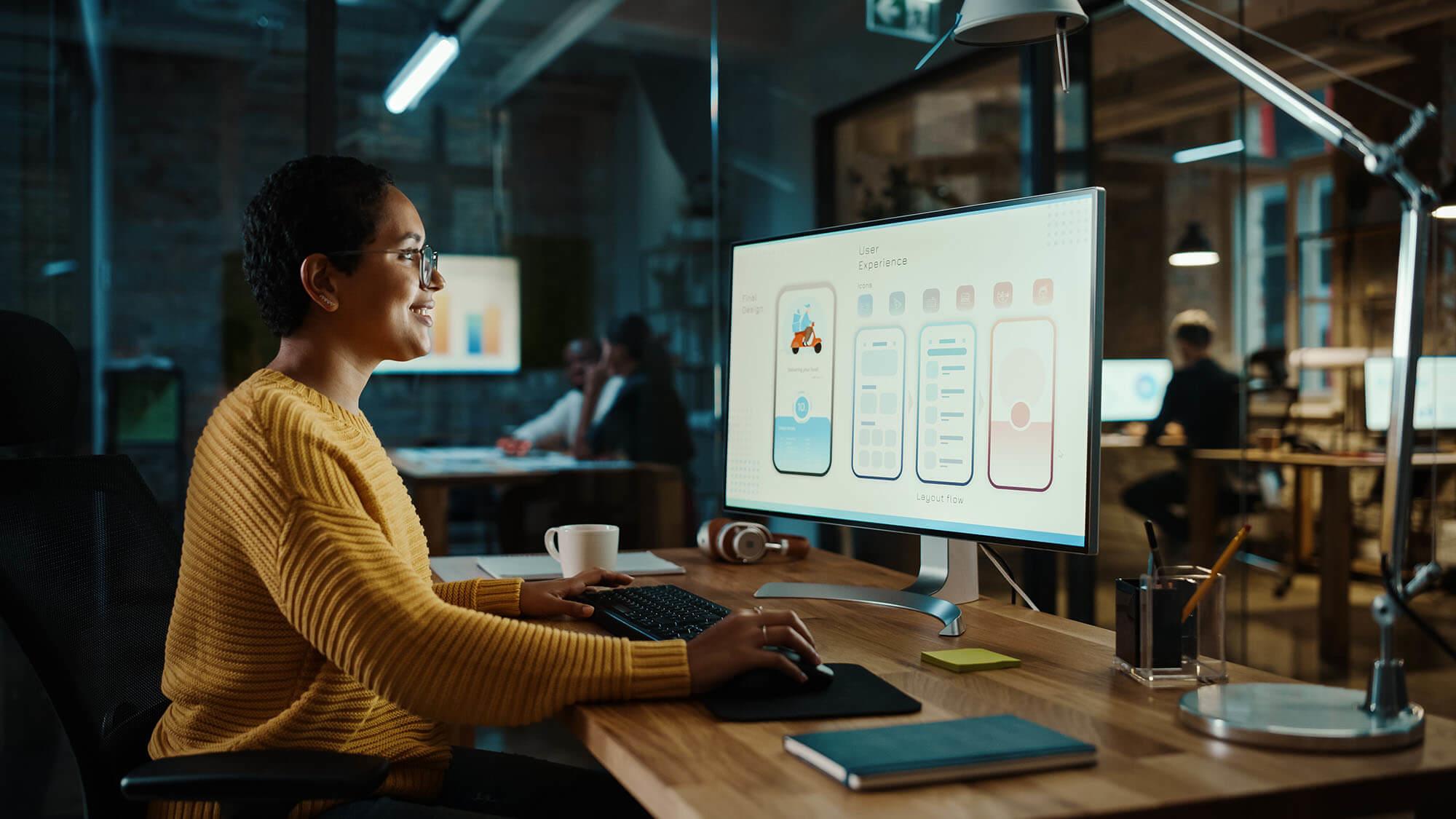Creative Website Design Solutions for Modern and Engaging Internet Sites
In the realm of website design, the quest of modern-day and appealing remedies has become increasingly vital for companies intending to capture customer interest. By incorporating bold shade systems, interactive components, and receptive formats, designers can produce experiences that not just resonate with users but also improve brand name identification. The critical consolidation of multimedia content even more improves these interactions, cultivating a deeper link with visitors - las vegas seo. The real obstacle lies in stabilizing creative thinking with functionality-- an exploration that exposes a number of ingenious strategies worth considering.
Embracing Vibrant Color Pattern
In website design, the strategic use strong color design can considerably improve individual engagement and brand identity. By employing lively tones, developers can develop visually striking websites that capture interest and promote a memorable experience. An appropriate color scheme not only reflects a business's worths however likewise evokes particular emotions that can influence individual actions.
Bold colors can be utilized to assist customers' attention to crucial elements such as phone calls to activity, enhancing conversion rates. Using contrasting colors for switches and links can make these elements stand out, triggering users to communicate more easily. A cohesive shade scheme throughout the site strengthens brand recognition, developing a sense of knowledge and count on amongst visitors.
Nevertheless, it is critical to balance bold colors with sufficient white room to prevent overwhelming individuals. Effective usage of typography likewise enhances strong shades, making certain readability while keeping aesthetic charm. Inevitably, embracing strong color schemes in website design not just raises visual quality however additionally plays an indispensable duty in accomplishing strategic organization objectives, making it a vital factor to consider for modern-day web growth.

Making Use Of Interactive Aspects
Interactive elements are necessary in modern-day website design, as they significantly enhance individual involvement and create a much more vibrant browsing experience. By including functions such as computer animations, float effects, and clickable components, sites can motivate users to discover web content better and return for future check outs.

Micro-interactions, such as subtle animations when a button is clicked or a kind is sent, can additionally enhance the individual experience by supplying instant comments. These little details can make the internet site really feel more receptive and active, cultivating a feeling of link between individuals and the website.
Additionally, gamification elements, such as incentives for completing particular activities, can encourage users to involve with the content more deeply. By thoughtfully integrating these interactive parts, web designers can create a remarkable and appealing on the internet experience that resonates with customers and motivates them to return.
Implementing Receptive Style
Executing receptive design is vital in today's multi-device landscape, making sure that websites offer an optimum viewing experience throughout different display sizes. As users progressively access the internet via smartphones, tablet computers, and desktops, a one-size-fits-all strategy is no more feasible. Responsive style permits seamless navigating and interaction, adjusting format and web content to fit the device being used.
Key principles of responsive style consist of liquid grids, flexible images, and media questions. Media queries help with the application of different designs based on the tool's features, such as width, height, or resolution, enabling developers to customize the individual experience effectively.
Furthermore, receptive layout enhances SEO performance, as internet have a peek at this site search engine favor mobile-friendly websites. By executing receptive design, companies not only enhance individual contentment and involvement however also increase their reach in an affordable electronic landscape. As modern technology proceeds to advance, taking on receptive layout has actually ended up being a fundamental technique for any kind of contemporary and engaging site.
Integrating Multimedia Content
Multimedia material plays a vital role in developing interesting and dynamic internet navigate to this website experiences that capture customers' focus and improve understanding. By combining text, photos, audio, and video clip, web sites can provide a richer story that interest various learning styles and choices. This combination not only boosts user involvement yet also help in communicating complex concepts succinctly.
Incorporating high-grade pictures and infographics can damage up textual content, making it a lot more digestible. Video clip tutorials and presentations can supply in-depth insights that static web content may not completely connect. Audio aspects, such as podcasts or history music, can likewise boost the atmosphere of a website, producing an extra immersive experience.
In addition, the tactical usage of multimedia can boost SEO performance, as internet search engine favor diverse material kinds, increasing visibility. Nevertheless, it is critical to guarantee that multimedia aspects do not impede web page load times, as this can cause customer frustration. By balancing multimedia integration with efficiency factors to consider, internet designers can create visually attractive and useful internet sites that reverberate with users, fostering a much deeper connection and encouraging return sees.
Focusing On Customer Experience

To accomplish an optimal individual experience, designers should concentrate on a number of vital concepts. Responsive style is essential; websites must adapt flawlessly to different tools and display dimensions. This accessibility guarantees that individuals can engage with material no matter their chosen system. Quality in format and pecking order is essential. Clear phone call to activity, understandable typography, and organized material guide users, decreasing cognitive tons.
In addition, incorporating user responses into the layout process is very useful. Normal screening with real users helps identify discomfort factors and areas for renovation, permitting iterative improvements. Inevitably, prioritizing UX not only elevates user complete satisfaction yet also drives involvement and conversion prices, making it a critical aspect of contemporary web design approaches. By placing individuals at the facility of layout efforts, sites can create enduring, favorable impressions that check over here motivate return check outs.
Verdict
Finally, contemporary internet layout options that emphasize vibrant shade plans, interactive elements, receptive layout, and multimedia material considerably enhance individual engagement and satisfaction. Focusing on individual experience through clear formats and constant responses additionally adds to boosted conversion rates. By taking on these techniques, sites can effectively captivate site visitors and strengthen brand name identity, inevitably resulting in an extra dynamic and appealing on-line presence. The assimilation of these design principles is crucial for accomplishing modern-day website design goals.